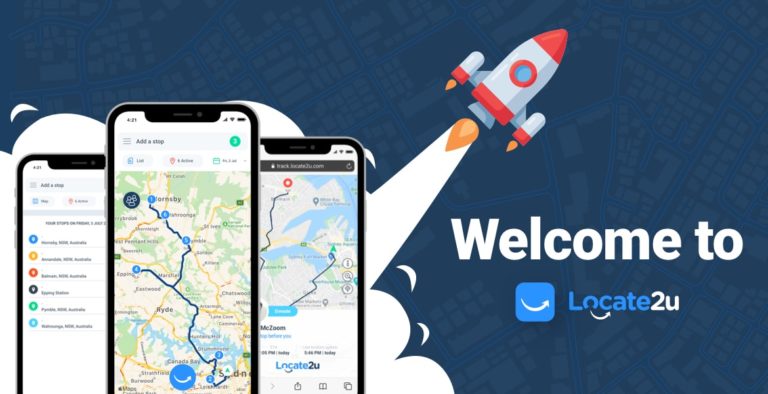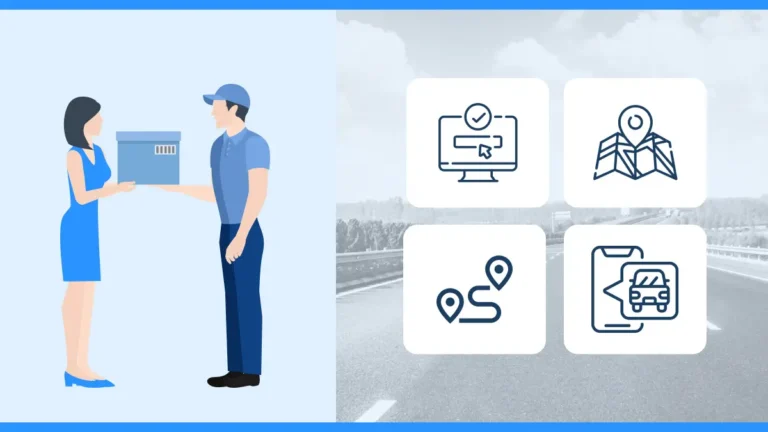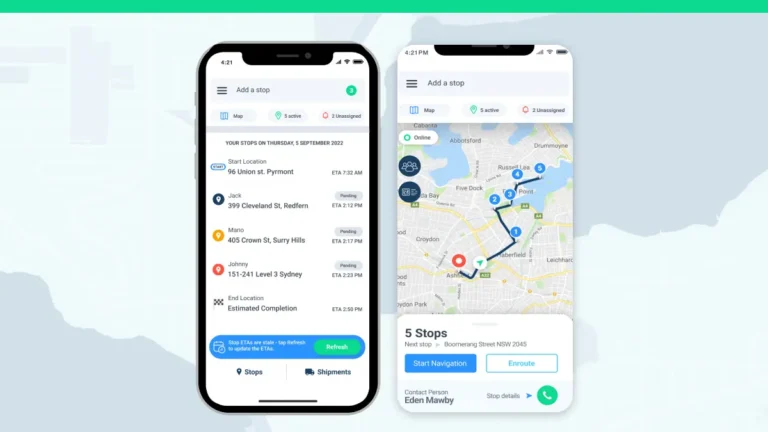Picture this: You, as a business owner, are (trying to) manage a growing fleet. But you are still relying on an outdated system instead of a cloud-based transport management system (TMS).
Many business owners unfortunately find themselves in this situation – relying on a system that requires constant manual updates and maintenance.
A cloud-based transport management system can elevate your business. This type of software is quickly becoming the preferred choice for managers who want actual control over their logistics.
Cloud-based TMS give businesses an easy way to manager their delivery and transport operations without the heavy infrastructure costs of traditional systems.
But is switching to the cloud the right move for your business? First, let’s establish exactly what cloud-based TMS is.
What is a cloud-based TMS?
In short, a cloud-based transport management system is a software solution hosted on remote servers instead of being installed on a local device.
It basically allows business owners to keep track of all the important moving bits that come with running a delivery business.
This includes:
- managing shipments,
- tracking deliveries,
- optimizing routes and
- overseeing fleet performance.
But unlike on-site TMS (which requires costly infrastructure and a large IT team for maintenance), cloud-based TMS works on a subscription model.
It is also accessible from any device, as long as you have internet access. This alone makes it a flexible choice for business wanting to scale while keeping real-time visibility in mind.
Why businesses are moving to cloud-based TMS
Modern supply chains are becoming increasingly complex, and they are not going to change any time soon.
Why?
Because businesses must now adapt to even greater pressure, in the form of:
- meeting customer expectations,
- ensuring smoother operations,
- reducing costs and increasing profits.
Cloud-based TMS makes it easy to do all this.
According to a report by Research and Markets, the global TMS market will likely grow at a compound annual growth rate (CAGR) of 17.4% over the next five years.
And cloud-based transport management systems are leading this growth.
So, ask yourself: Do you want to get rid of anything that wastes time and money and prevents your business from growing?
If you answered yes, it’s time to consider switching to cloud-based TMS. Let’s look at some of the pros.
The pros of cloud-based TMS
The pros of cloud-based transport management systems far outweigh the cons.
Let’s start with how it benefits your business.
It is cost-effective
Traditional transport management systems need upfront investment in terms of hardware, software, and IT support.
Cloud-based TMS, on the other hand, eliminates these costs by offering a subscription-based model.
That means that businesses only pay only for what they need. It’s the perfect balance for small and mid-sized companies looking to optimize their process without filing for bankruptcy.
It is flexible and can scale
A cloud-based TMS can grow at the same pace your business grows.
You might be managing a small fleet. You might might be managing a full-scale, nationwide operation. It doesn’t matter.
The cloud platform allows you to add new users, vehicles, and features without needing major infrastructure upgrades. And without any disruptions.
It gives real-time data and visibility
Probably the biggest advantages of cloud-based TMS is the ease to access real-time tracking, route optimization, and shipment updates.
And having this data at their fingertips will help your logistics manager make better decisions.
They can plan better to reduce delays while making customers happy by providing real-time ETAs.
It has seamless integration
A cloud-based TMS integrates easily with other business tools.
This includes enterprise resource planning (ERP) software, warehouse management systems (WMS), and even GPS tracking software.
Having a cloud-based TMS that interacts with your other business tools is the key to success here: all your data is centralized and accessible in one place.
It provides multi-device remote access
Businesses can also manage their fleets remotely, as long as they are using a device with an internet connection.
So, if you have teams scattered throughout a region, or working from multilple location, this is the tool that will help you get require real-time oversight, regardless of where you are based.
READ: Transport Management System Explained: What You Need to Know
The cons of cloud-based TMS
Unfortunately, there are cons to cloud-based TMS as well. These include cyber risks, unstable internet access, and fees.
Data security and cyber risks
Cloud providers do implement strict security protocols. But there will always be a risk when storing sensitive data offsite.
Businesses handling sensitive shipment data must therefore choose a TMS provider that has strong encryption, compliance with industry regulations, and robust access controls.
Being dependent on an internet connection
Cloud-based TMS relies on an internet connection.
If your company experiences connectivity issues or server downtime from the provider, it will disrupt fleet operations, which is not ideal.
To prevent this, you will need a backup solution or or some form of a contingency plan to get around spotty internet access.
Recurring costs and subscription fees
Although cloud-based TMS eliminates large upfront costs, the recurring subscription fees can add up over time.
This, however, can be mitigated when you weight up the long-term costs with the benefits you will gain from using a cloud-based TMS.
Limited customization
While on-site TMS solutions might provide you with an extremely customizable solution, cloud-based TMS could have restrictions beyond your specific needs.
One option would be to reach out to the cloud-based TMS provider and see if they offer flexible configuration options.
Is cloud-based TMS the future?
The shift from on-site TMS to cloud-based TMS is gaining momentum, and for good reason.
Businesses want cost-effective, scalable, and real-time logistics management solutions – and for that, cloud-based systems are the perfect solution.
However, the drawbacks (like cybersecurity risks and internet dependency) should be considered before making the switch.
At the end of the day, cloud-based TMS will help businesses stay competitive.
If you’re looking for a solution that provides real-time tracking, route optimization, and fleet management all in one, you’d want to take a look at Locate2u’s transport management system.
About the author
Cheryl has contributed to various international publications, with a fervor for data and technology. She explores the intersection of emerging tech trends with logistics, focusing on how digital innovations are reshaping industries on a global scale. When she's not dissecting the latest developments in AI-driven innovation and digital solutions, Cheryl can be found gaming, kickboxing, or navigating the novel niches of consumer gadgetry.











